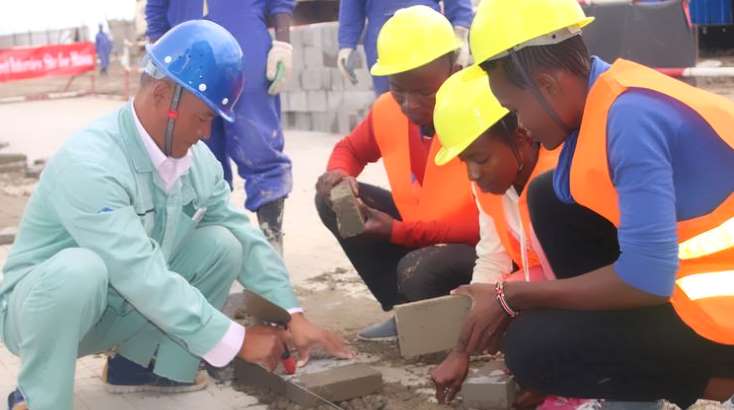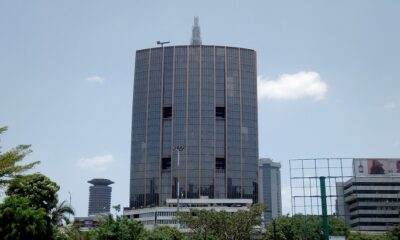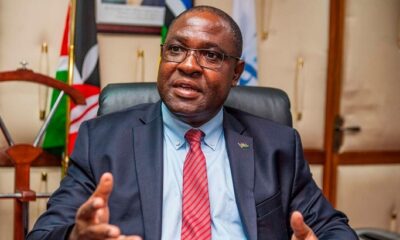Infrastructure
Kenya Standard Gauge Railway
The project is divided into two phases: Mombasa-Nairobi SGR, and Nairobi-Malaba SGR.

Kenya is developing a new standard gauge railway (SGR) line for passengers and cargo transportation between the port city of Mombasa and the lakeside city of Kisumu, and eventually to Malaba town on the Kenya-Uganda border.
The Kenya Standard Gauge Railway project is divided into two phases: Mombasa-Nairobi SGR (phase one), and Nairobi-Malaba SGR (phase two).
The Nairobi-Malaba railway project is subdivided into three segments: Nairobi-Naivasha SGR, Naivasha-Kisumu SGR, and Kisumu-Malaba SGR.
The first phase of the project, Mombasa-Nairobi Standard Gauge Railway, is already complete and operational. Built at a cost of Sh327 billion, the Mombasa-Nairobi SGR is considered Kenya’s biggest infrastructure project since independence.
Construction of the 609-km line started in October 2013, and was completed early 2017. The project was undertaken by China Road and Bridge Corporation, which hired about 25,000 Kenyans.
The SGR project was 90 per cent funded by China Exim Bank, with the Kenyan government contributing the remaining 10 per cent.
READ: Negative effects of SGR on the Kenyan economy
The facility has shortened the passenger travel time from Mombasa to Nairobi from more than ten hours to about five hours. The first fare-paying commuters boarded the “Madaraka Express” on June 1, 2017, the 54th Madaraka Day. Commercial freight services began on January 1, 2018.
SGR Route Map
The railway runs parallel to the existing metre-gauge Uganda Railway. Due to the hilly terrain, large portions of the railway are built on bridges, embankments, and cuttings.
The facility tackles the hilly terrain near Mazeras town by use of two bridges – with the 43.5-metre high Mazeras-2 bridge being the tallest one on the route.
READ: 7 Benefits of Mombasa-Nairobi standard gauge railway
The Mombasa-Nairobi SGR has 98 bridges. The 2.6-kilometre Athi River Super Bridge was at the time of its completion the sixth-longest bridge in Africa.
The SGR route starts from Mombasa and passes through Mariakani, Miasenyi, Voi, Mtito Andei, Kibwezi, Emali, Athi River and finally to Nairobi.
SGR Stations
The Mombasa-Nairobi SGR has nine passenger stations, each of which is architecturally inspired by local features. The Mombasa Terminus, for example, is made up of concentric circles and a central tower, representing a ripple in the ocean.
Mariakani’s entryways are inspired by coconut trees that are plentiful in the areas, while Miasenyi consists of white and brown stripes – inspired by the stripes of a zebra.
Voi station is V-shaped like a person with raised hands representing first letter of the town. On its part, Mtito Andei’s sloping roofs represent Mount Kilimanjaro and the Chyulu Hills.
The Kibwezi station is based on African architecture, with trees that shield passengers from the sun. The Emali one has a closed fist – representing unity, while the Athi River station is station shaped like the region’s hills. The Nairobi Terminus has two trains with a bridge on top.
Phase two of SGR project
Construction of the second phase of the Kenya Standard Gauge Railway is currently underway. Progress report on the 120km Nairobi-Naivasha SGR shows that engineers are working round the clock as they race to complete the project by June.
A few months ago, the project’s contractor, China Communications Construction Company, hit a major milestone, with completion of works on the 4.5-kilometre Em-Bulbul tunnel. zxC
The Em-Bulbul tunnel, second longest railway tunnel in Africa, is designed as a single-track railway underpass with a clearance height of 7.6 metres and a width of 6.4 metres built using the three-bench seven-step excavation method.
The fate of the second segment of SGR phase two remain unclear following China’s recent refusal to approve a Sh380 billion loan for the Naivasha-Kisumu railway project despite all formalities having been completed.
READ: China declines to sign Sh380bn loan for Naivasha-Kisumu railway
Sources familiar with the matter said China declined to sign onto the deal after President Kenyatta asked the Asian nation to give half of the Sh380 billion needed for the project as a grant, as opposed to a loan, as a means to tame Kenya’s rising debt.
The request prompted Chinese Premier Xi Jinping to defer making that decision until Kenya conducts a commercial viability study on the entire Mombasa-Kisumu railway.












